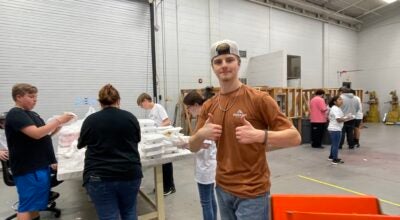Looking out for the soybean rust
Published 4:20 pm Friday, August 5, 2016
By Ty Torrance
Asian Soybean Rust has not been confirmed on soybeans this year in Decatur County. However, soybean rust has been confirmed in kudzu in Decatur, Thomas, Miller, and Seminole Counties. The spores of rust are primarily spread via wind dispersal, so storms are the perfect carrier.
Future weather forecasts suggest it is possible we will see Asian Soybean Rust move through the state. Soybeans that are in the R6 stage or further do not need a fungicide spray because the effects of the rust, at that point would not limit the crop’s yield potential. The R6 stage of growth is defined as “Full Seed”, or the seeds are touching in a pod at one of the four uppermost nodes of the plant.
Some of the earlier planted beans should currently be close to this stage, but later planted beans are still in the “danger zone of disease” so to speak. With that said, a fungicide spray should be carefully considered with several factors in mind.
Does the yield potential merit a fungicide spray? If there is an estimated yield potential of 20 lbs./ acre or greater, a fungicide spray should be considered. How far away is the crop from a growth stage that is safe from rust? Most soybean growers spray Dimilin and Boron at the late bloom to early pod development stage.
We strongly encourage growers to add a fungicide to this tank mix to protect the crop from rust. If you think you see rust in your field, please give me a call, I can confirm it for you. The University of Georgia has soybean research plots throughout the state that are scouted weekly to help monitor the presence and spread of the disease.
These plots are a tremendous help because rust has the ability to move in and spread quickly as many farmers have unfortunately experienced in previous years.
If you have any other questions or concerns, please give us a call at (229)-248-3033.




